
Greetings friends and community members. This past Sunday I decided to do something different to spend the afternoon, and I chose to visit one of the places I like to relax: La Loma San Pedro. This elevation, which can be seen from the window of my house, is part of a chain of small coastal heights north of Havana, with little more than 50 meters above sea level, but with a fascinating nature.
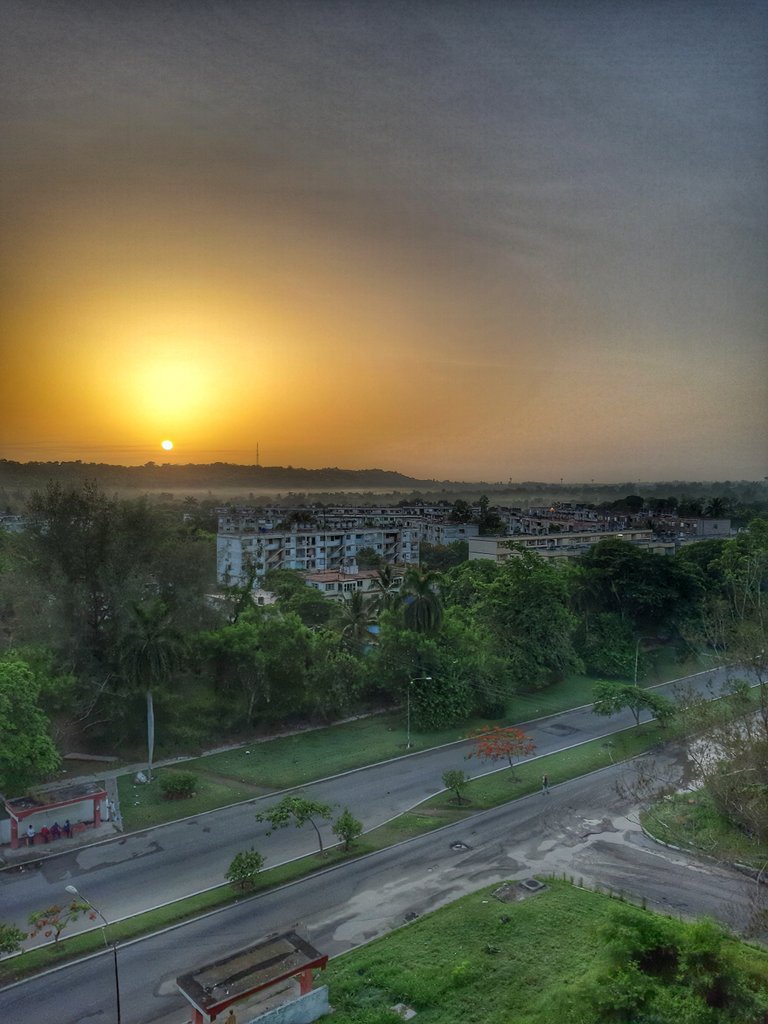 The rising sun rising over Loma San Pedro
On Sunday, in the afternoon, I decided to climb to the top of the hill to spend some time in communion with nature, and enjoy the beautiful views of the Cojímar River Valley that can be enjoyed from there.
The rising sun rising over Loma San Pedro
On Sunday, in the afternoon, I decided to climb to the top of the hill to spend some time in communion with nature, and enjoy the beautiful views of the Cojímar River Valley that can be enjoyed from there.
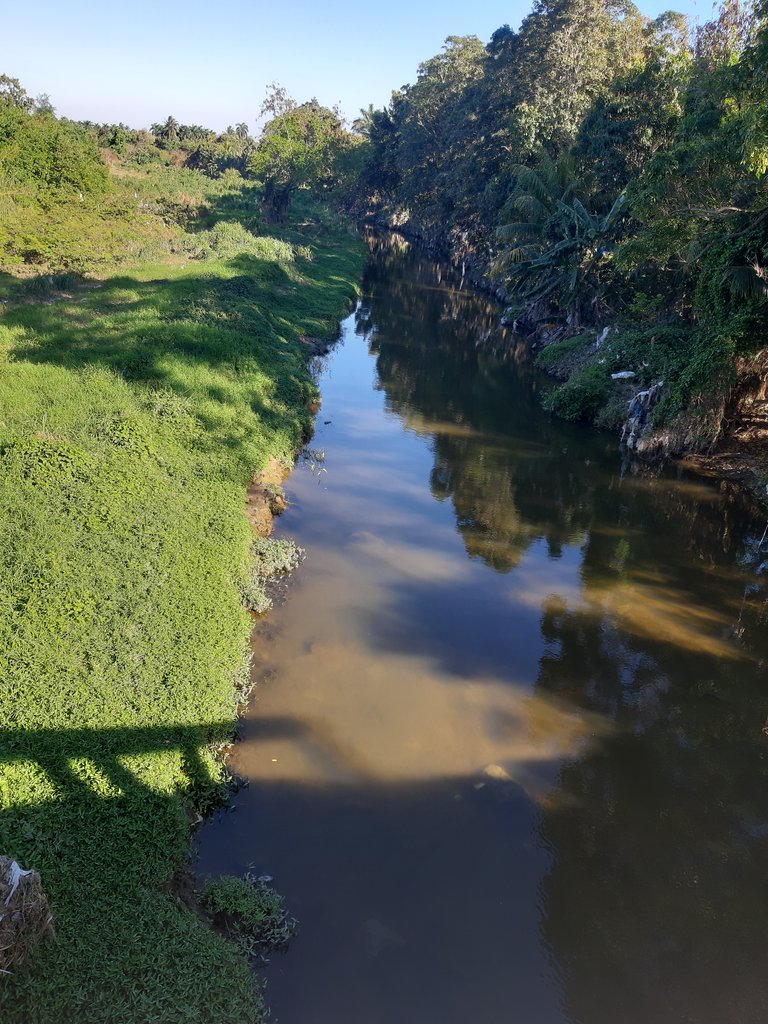 Cojímar River
The elevation is 3 km from my house, so I went walking to get some exercise. The journey took me a little more than half an hour to reach the top by a fairly simple path. Once there, the first thing I did was to stand on a mound to enjoy for a moment the gentle breeze coming from the sea and appreciate some elements of the landscape, such as the Cojímar River canyon, which can be seen in these photographs in the background, although surrounded by lush vegetation of remarkable greenery. This canyon was formed as a result of the erosive cut of the Cojímar River through fracture zones in the terrain in tectonic uplift.
Cojímar River
The elevation is 3 km from my house, so I went walking to get some exercise. The journey took me a little more than half an hour to reach the top by a fairly simple path. Once there, the first thing I did was to stand on a mound to enjoy for a moment the gentle breeze coming from the sea and appreciate some elements of the landscape, such as the Cojímar River canyon, which can be seen in these photographs in the background, although surrounded by lush vegetation of remarkable greenery. This canyon was formed as a result of the erosive cut of the Cojímar River through fracture zones in the terrain in tectonic uplift.
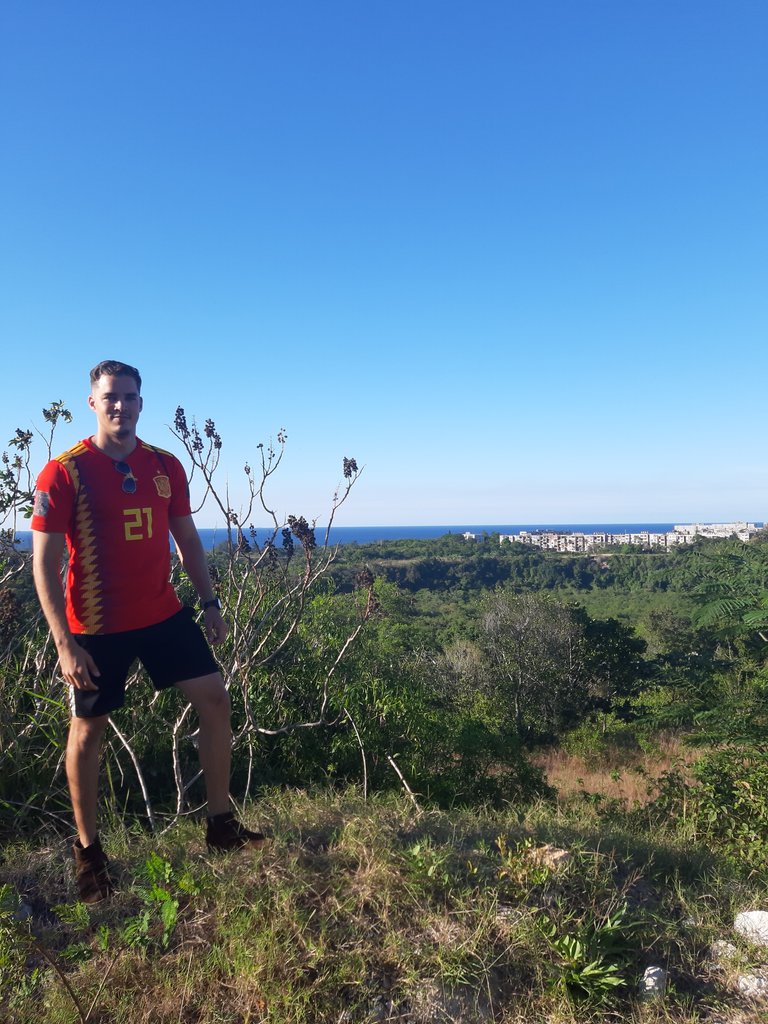 At the top of the elevation with its back to the Cojímar river canyon.
At the top of the elevation with its back to the Cojímar river canyon.
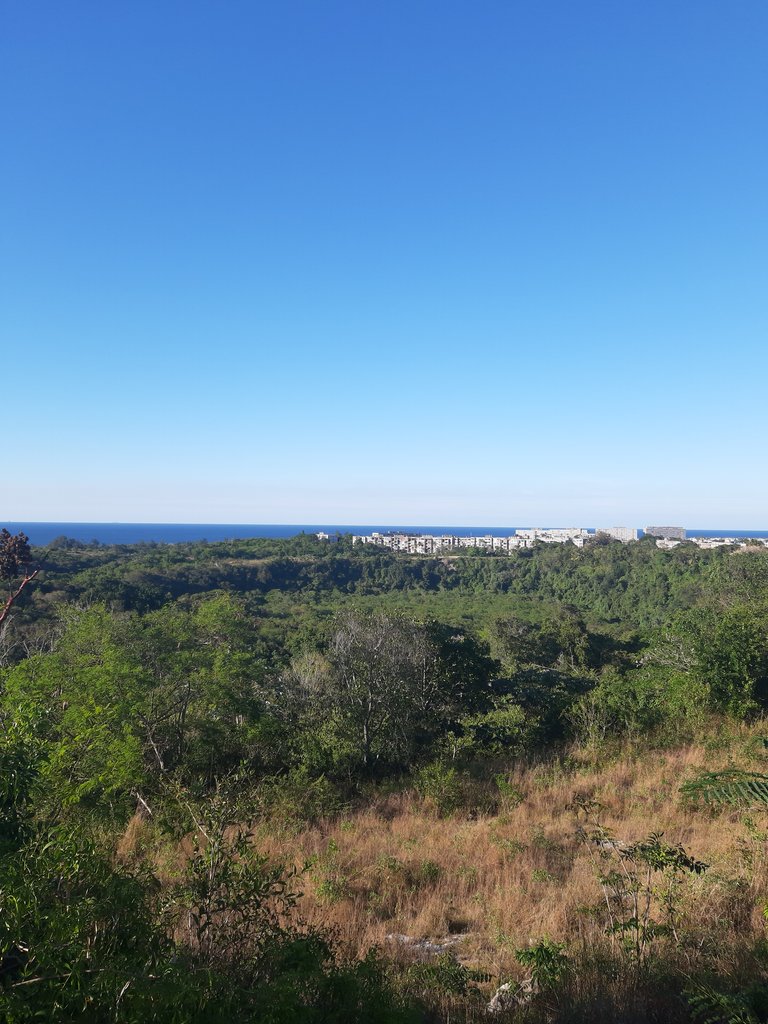 View at the bottom of the erosive-tectonic canyon of the Cojímar river.
As I am a geographer and geologist by profession, I made a small exploration of the terrain as usual. This elevation is made up of rocks of marine origin of the limestone and marl type, formed in ancient seas in deep areas. The marl, which is the predominant type of rock in the section I explored, contains a lot of clay, is used for construction materials, and is extracted in this area because of which artificial caves have been created.
View at the bottom of the erosive-tectonic canyon of the Cojímar river.
As I am a geographer and geologist by profession, I made a small exploration of the terrain as usual. This elevation is made up of rocks of marine origin of the limestone and marl type, formed in ancient seas in deep areas. The marl, which is the predominant type of rock in the section I explored, contains a lot of clay, is used for construction materials, and is extracted in this area because of which artificial caves have been created.
 Outcropping of marly rocks
Outcropping of marly rocks
 Artificial cave in the marly rocks
During my exploration and to my surprise I was able to find some marine fossils, quite well preserved, which are proof that in another time this land was under the sea. One of them was an echinoid, that is, a fossilized ancient starfish, and a fragment of shell.
Artificial cave in the marly rocks
During my exploration and to my surprise I was able to find some marine fossils, quite well preserved, which are proof that in another time this land was under the sea. One of them was an echinoid, that is, a fossilized ancient starfish, and a fragment of shell.
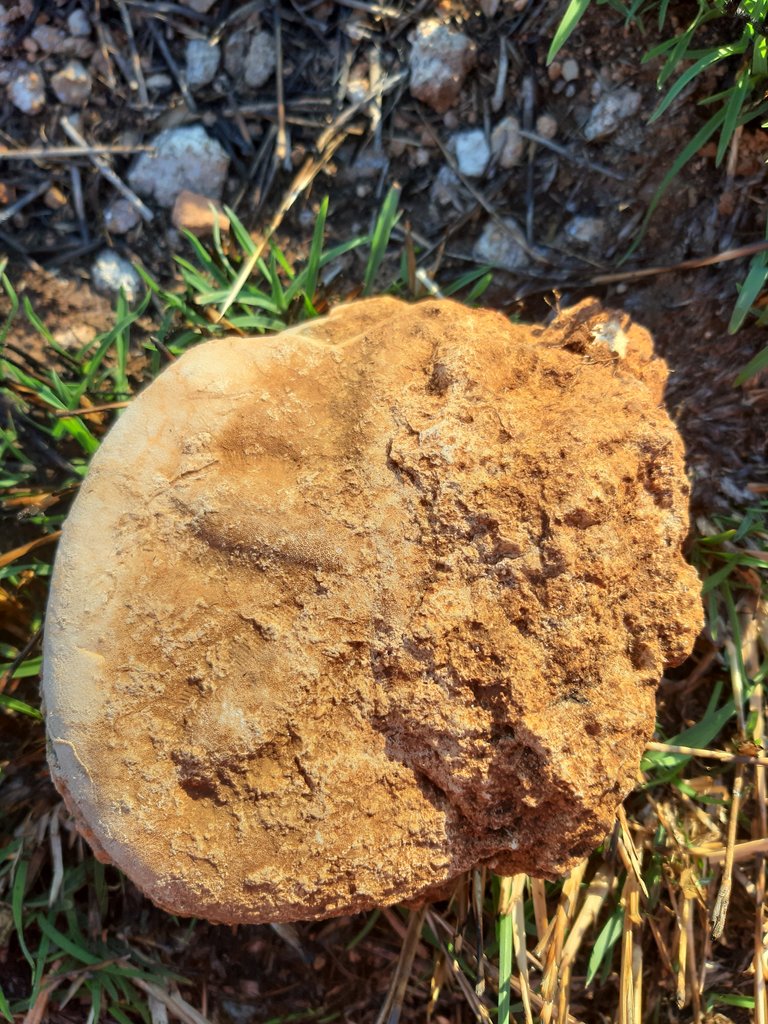 Starfish fossil
Starfish fossil
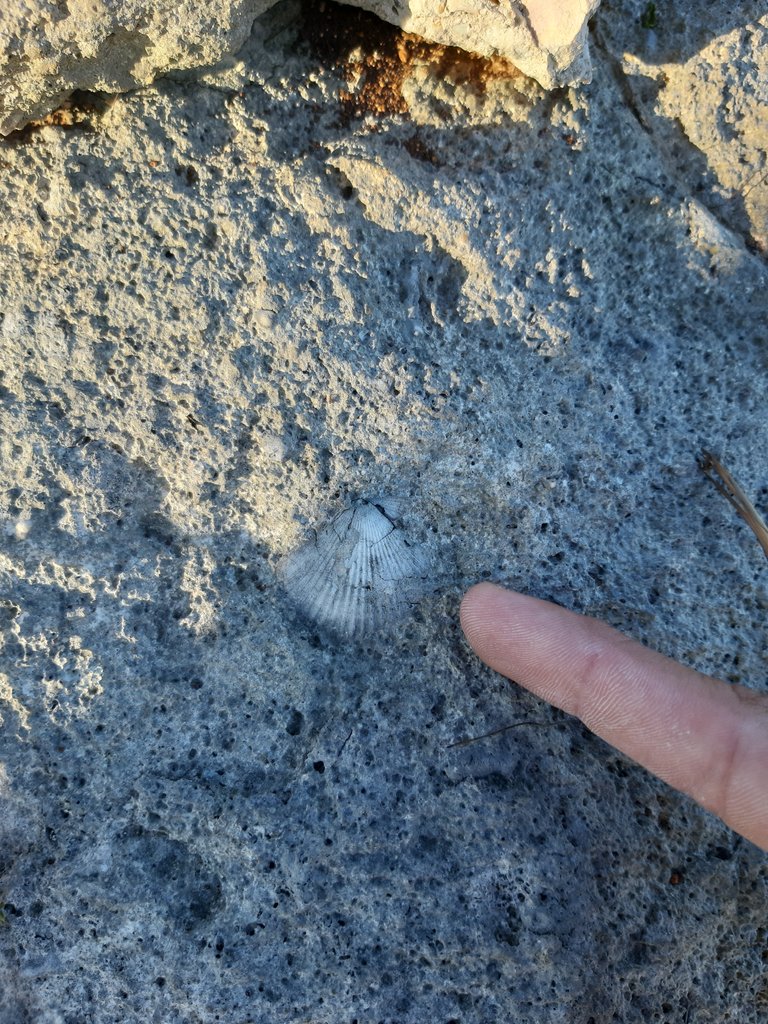 Fragment of shell preserved in the rock
After this, I stood right on the edge of the southern escarpment of the elevation, to enjoy the beautiful view of the landscape of the Cojímar River Valley. It was so beautiful to be there, that I stayed there for a long time until sunset, meditating on the beauty of life and nature while taking some pictures.
Fragment of shell preserved in the rock
After this, I stood right on the edge of the southern escarpment of the elevation, to enjoy the beautiful view of the landscape of the Cojímar River Valley. It was so beautiful to be there, that I stayed there for a long time until sunset, meditating on the beauty of life and nature while taking some pictures.
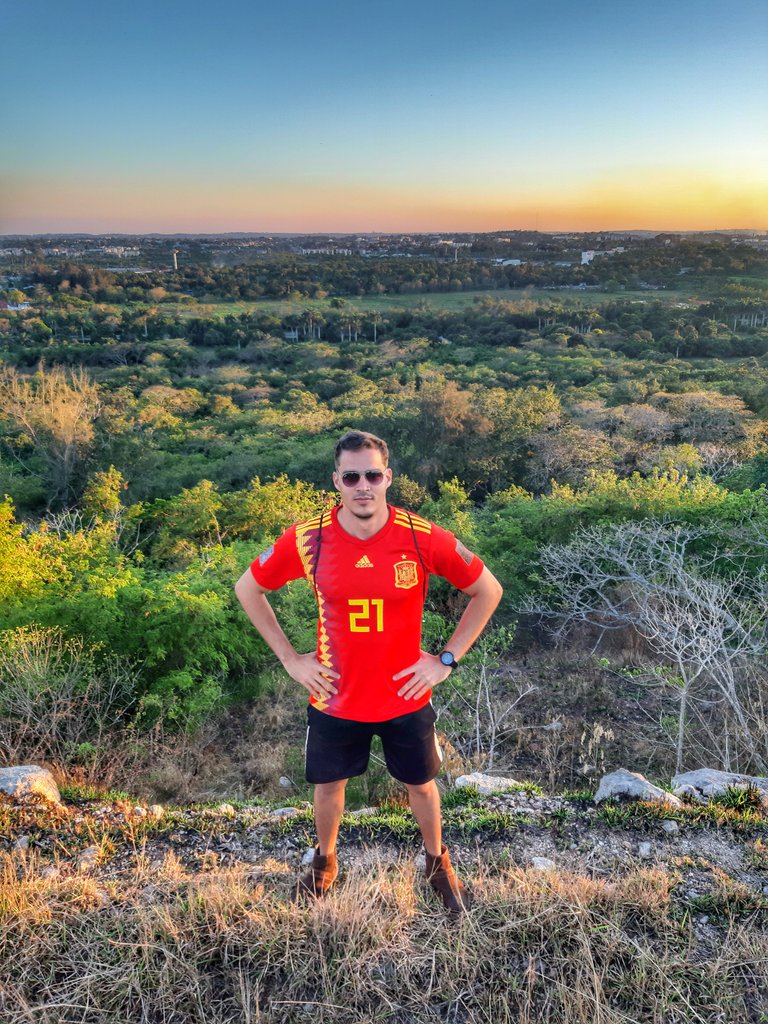 On the edge of the Loma San Pedro escarpment
On the edge of the Loma San Pedro escarpment
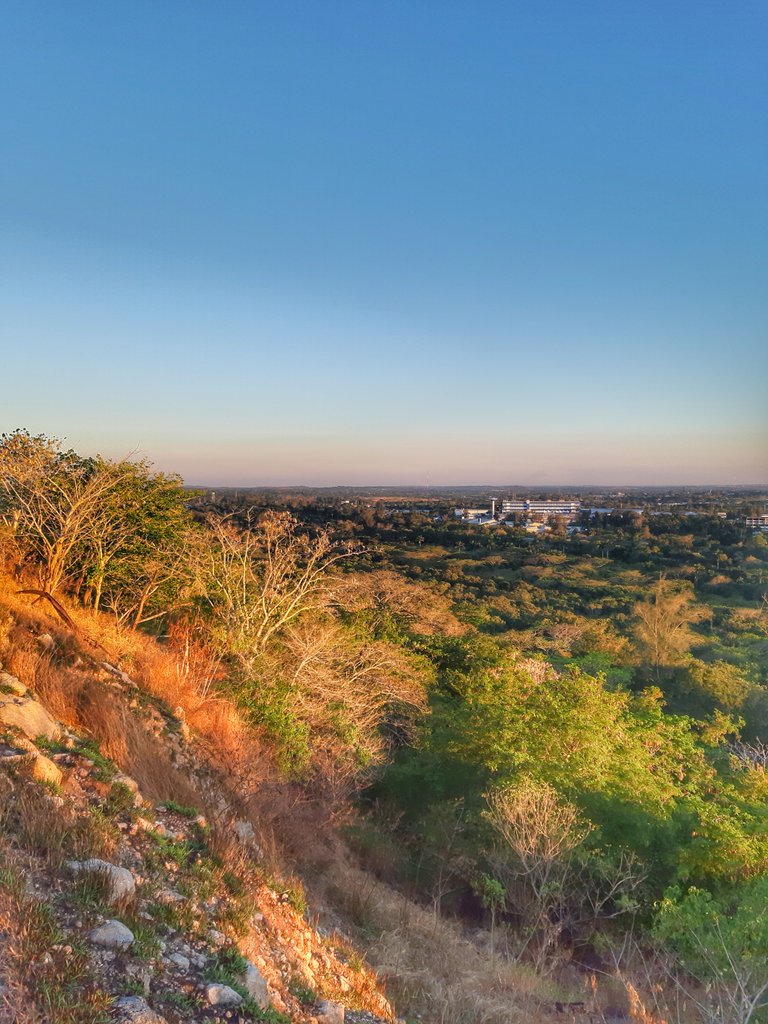 Views of the escarpment and the Cojímar River Valley.
Views of the escarpment and the Cojímar River Valley.
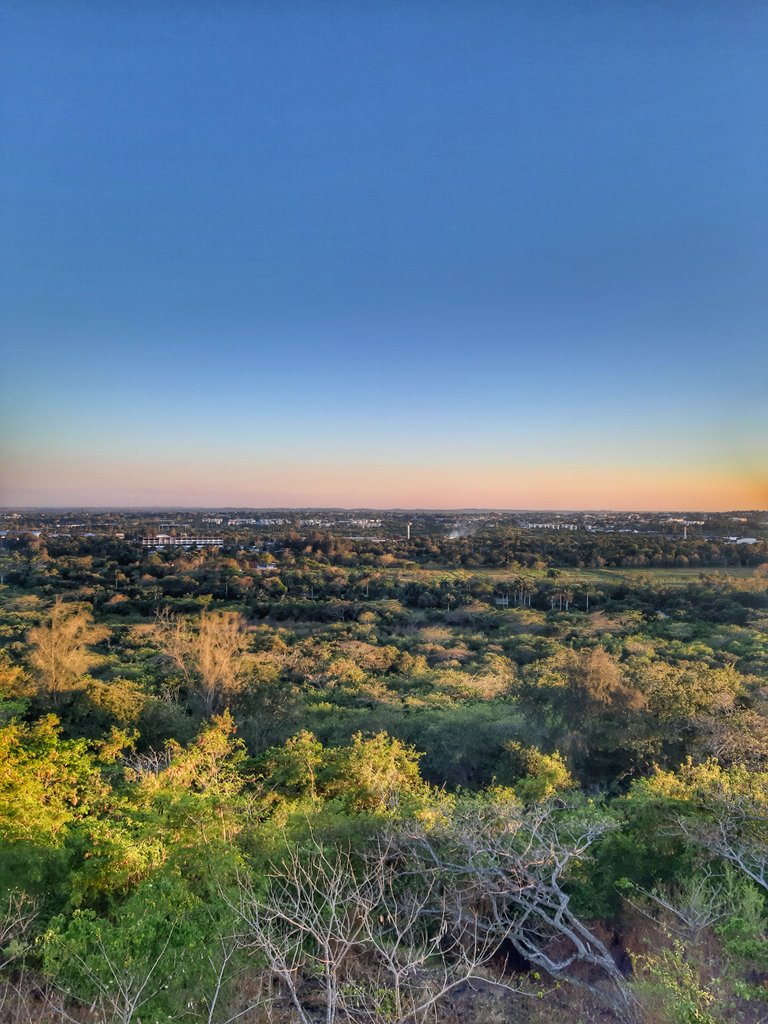 Views of the Cojímar River Valley
Views of the Cojímar River Valley
 Sunset from the Loma San Pedro lookout point.
And so friends, it was for me a very pleasant experience, which allowed me to comfort my mind while enjoying the wonders of nature in a special environment, away from the hustle and bustle and city routines. I hope you enjoyed it. Thank you for your time. Best regards and my best wishes for a happy day.
Sunset from the Loma San Pedro lookout point.
And so friends, it was for me a very pleasant experience, which allowed me to comfort my mind while enjoying the wonders of nature in a special environment, away from the hustle and bustle and city routines. I hope you enjoyed it. Thank you for your time. Best regards and my best wishes for a happy day.

All images are my own, captured with the camera of my Samsung Galaxy A7 cell phone.
Translated at DeepL
Link
















The sun rising over Loma San Pedro is looking beautiful.
That's right! A marvel. Thank you.
Wonderful!
Thanks!!
El texto es muy interesante. Me gustó mucho la breve explicación geológica del terreno. La geología es hermosa, ¿verdad? Poder ir a un lugar y comprender su historia geológica, imaginar cómo fue en el pasado. Qué lástima que yo no pueda hacer todo lo que quiero hacer en geología 😆, pero esa conexión que tienes con la naturaleza, la tranquilidad y paz que se siente en lugares así la entiendo completamente y es una experiencia verdaderamente zen.
Thank you very much!